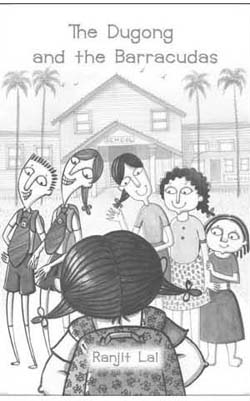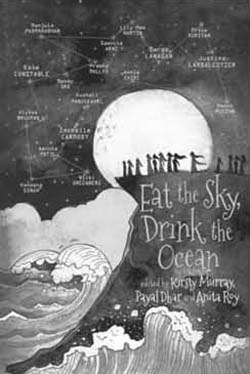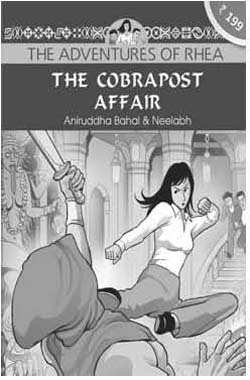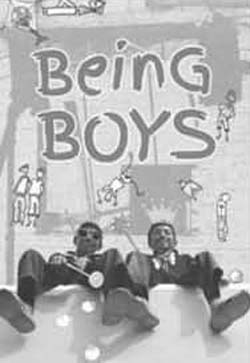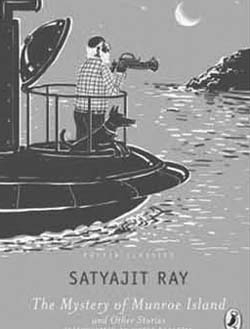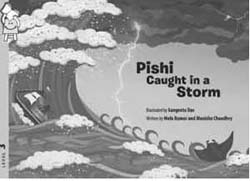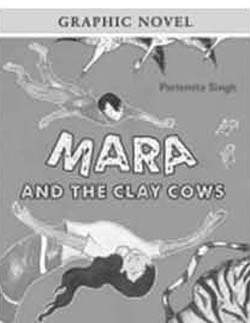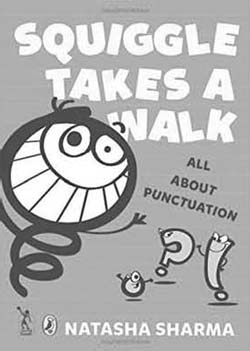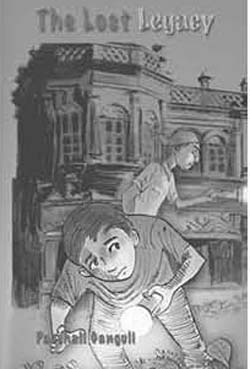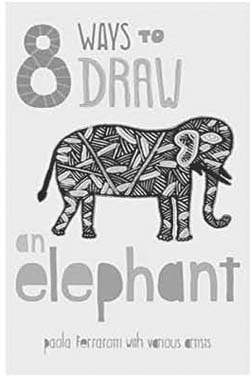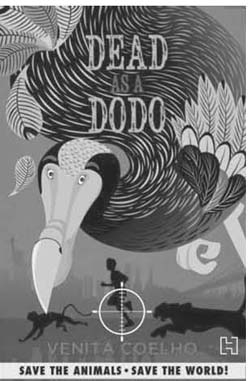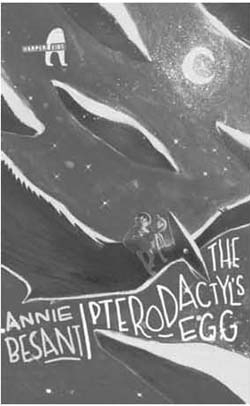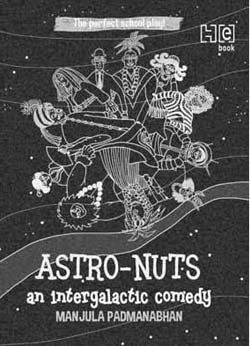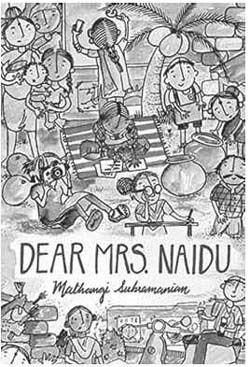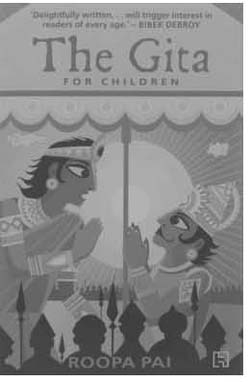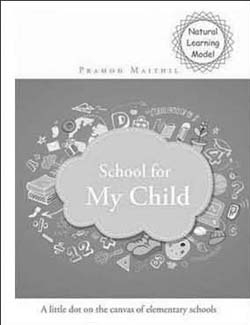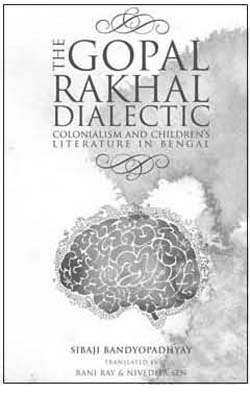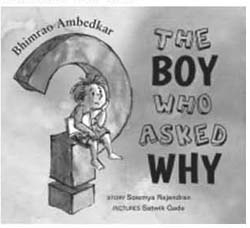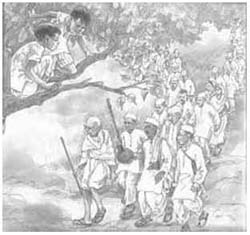A good reason to get the newspaper Indian Express is that most Sundays there is an article by Ranjit Lal on the animal or plant world. These articles look with gentle humour and a different perspective at fellow inhabitants of our earth: bugs, birds, animals. They may be creatures we have just read about, or even those we see every day, mostly unnoticed by us as we whiz past busily through our very important lives, sometimes destroyed by us deliberately or unthinkingly.
Archives
November 2015 . VOLUME 39, NUMBER 11Eat the Sky, Drink the Ocean is an anthology of feminist fiction from Australia and India, some of them collaborations between writers and artists from both nations. It’s an interesting mix of graphic stories, short stories, and plays. The Introduction is a sort of story too—why and how this book was made.
The rise of indigenous graphic novels in India is not entirely steady or even smooth. While the premise of a graphic novel is exciting, it’s not easy to come across a writer-illustrator duo who can pull off the task with panache. In the case of The Cobrapost Affair, one can say they almost accomplish it, if it only weren’t for the absurdity of the tale that ensues.
2015
Recently, an Australian television channel telecast a documentary about an Afghan now domiciled in Australia, returning to Kabul to revive a music school. The success of the school, scored not just in terms of the music the students and teachers create, but the unique stories of desires and struggles, testifies to the tenacity of the human spirit.
2015
It’s not very often that one gets access to the rarefied world of boys who are on the cusp of becoming men. This is a precarious world they occupy, often populated with insensitive adults, jeering peers, and unfathomable fears—some imaginary, some unfounded—that threatens to come all undone at the slightest provocation or insult. Thankfully, Being Boys is a refreshing revelation of the male adolescent psyche that doesn’t resort to stereotypes of what boys should be like or aspire to become.
The Boy Who Speaks in Numbers takes us into spaces that Young Adult fiction usually does not go. Here it is a village in the Jaffna area of Sri Lanka that is bombed during the civil war and then a refugee camp for Tamils with its unique horrors. As the back cover says, ‘in all places where human deaths are reduced to numbers and guns do not differentiate between adults and children.’
This delightful collection brings to life in translation the magical world of Satyajit Ray’s science fiction for children. Through the character of the maverick scientist Professor Trilokeshwar Shonku, these narratives explore the frontiers of science and technology but also of the human imagination. Satyajit Ray (1921–1992) is best known as a film-maker, but he was also a writer, publisher, graphic artist and music composer. He was fascinated by mysteries. Apart from the scientist-adventurer-explorer Shonku he also created the sleuth Feluda whose exploits became the subject of several successful films.
The Tara Series by Annie Besant is an easy read for children. The stories are simple and entertaining. Tara’s Day Out is the simplest of the four books under review here and meant for children who are in 4-5 age group.
There are books, and there are quick-reads, as my schoolboys call them. Lavanya Raghunathan Fischer’s first work of fiction definitely belongs to the former category: it has to be read with time on your hand, a fully-charged attention span (no weak battery will process this), and patience to connect the very many dots that flow out of the author’s tropical imagination. No 45 minute skim read is ever going to do justice to this unusual offering, from a ‘lawyer who moonlights as a philosopher’, as the book introduces her.
What a delightful glimpse into the world of animals and birds, their follies and foibles! This is a heartwarming collection of three amusing stories. It could well be a read-aloud book for young listeners around 3 , while the 6-8 year age group would enjoy reading the stories for themselves.
In terms of publishing, the most interesting thing about Pishi Caught in a Storm is that the story was inspired by an entry to an illustration competition that Pratham Books held. The fact around which this book is woven is that manta rays visit so-called cleaning stations, where small fish eat parasites and dead tissue off their bodies.
It’s nice to know that India has finally woken up to the concept of original graphic novels—imagine what a story does to a kid’s mind when it is packaged along with whimsical sketches in vivid colours? In Mara And The Clay Cows author and illustrator Parismita Singh takes the reader to an unusual, magical territory of North Eastern India where an orphaned boy called Mara lives.
As early as July every year, The Book Review starts receiving books for the November issue. Among the multitudes of bright, cheerful little publications aimed at exploring the realms of fantasy and distant lands, lives of animals, plants and birds, and inculcating values about social service, My Little Body Book stands out, as one that talks about the importance of taking care of our bodies.
2015
For many years my children looked after stray dogs in the colony, feeding them when pregnant or lactating, taking injured ones to the vet, getting a couple ligated and rabies-shot. Then we moved, and a family of stray cats adopted us, including eventually a three day old, still blind, tabby whose mother was killed by dogs, and who survived because of my daughter’s sheer persistence. Naturally, our perspective became more feline than canine.
2015
Anand is a fastidious, book-ish 11 yearold who likes learning new words from his thesaurus and prefers living his life in an ordered and disciplined fashion—just the wrong sort of child to be saddled with bohemian parents who live life casually and think nothing of going on impromptu trips to weird places! His parents are at it again, and this time they have dragged him along to visit a friend who lives in the crumbling old mansion of his dacoit ancestors. The house comes replete with hidden passages, overgrown grounds and a tantalizing story of hidden treasure!
An illustrated book is often a child’s first introduction to the magical world of reading. Children have short attention spans and a limited vocabulary, thus the pictures represent a relatively familiar concrete experience with which they can identify.
Once upon a time Sonabai built a house, far, far away in the remote Puhphutara village of Madhya Pradesh’s Sarguja district. She lived with her husband, Holi Ram and their young son, Babu (Daroga Ram). Holi Ram spent most of the day working in the paddy fields; no one came to visit Sonabai nor did she go out. She was virtually alone, until one day, near the well, she saw some ‘squishy clay’.
2015
Did you know that a Dodo tastes absolutely horrible? I didn’t, until I read this hilarious, racy, a-thrill-a-minute careening adventure of three agents of the Animal Intelligence Agency. The eye catching cover by Priya Kuriyan shows you an impossibly cute Dodo, three agents in the line of fire against telltale skylines, along with a firm declaration: SAVE THE ANIMALS. SAVE THE WORLD!
Pterodactyl’s Egg by Annie Besant is a book about a Pterodactyl egg which Sam discovers on the playground and takes home. Little does he expect it to hatch, and what follows is not for the faint hearted!
The world, as we see every day, is getting increasingly complex. In addition to the decades long concerns over armament race, climate change and diplomatic mistrust, reign of anarchy in the name of religion in certain parts of the globe has marked the recent period.
2015
Twelve-year-old Sarojini goes to Ambedkar School in Bengaluru. Her feisty Amma works as a maid and cares about her daughter’s education deeply. Sarojini is fine with the school and its inadequacies till her best friend, Amir, moves away from their area into a better one and starts going to Greenhill, a posh private school. Things are not the same between them any more, Sarojini feels. And so, she decides that she must go to Greenhill too. Or bring back Amir to Ambedkar School.
The Panchatantra is a testimony to the rich tradition of the oral story telling culture of the subcontinent. Handed down over centuries, kids over generations have been brought up on a wide variety of tales from it, with each story underpinned by a moral message. Animal characters are central to the narrative, further enhancing the appeal of these stories to young minds.
Today, the child reader is addicted to western popular fiction that includes Harry Potter, Percy Jackson, as well as monsters, aliens, vampires, phantoms and other imported characters. Books like the Hunger Games and the Twilight series grip young readers’ minds.
Roopa Pai parses the Bhagavad Gita for younger readers in this new volume from Hachette whose back cover exhorts interest by declaring ‘It’s one of the oldest books in the world and India’s biggest blockbuster bestseller!’ Keeping with the hyperbolic tone of the cover that insists that the young person is missing out on something mementous, Pai opens the book by addressing the eager reader with this observation.
This little school in Bhopal, 28 students strong at last count, is one among several such efforts in different pockets of India to make a difference to the way children learn. In this book, the prime mover of Anand Niketan Democratic School, Pramod Maithil, shares the story of the school’s journey so far, starting with why the school was set up in the first place.
School education is a significant part of one’s life span that endeavours to impart critical thinking, reasoning and logic among children. Within the paradigm of school education, science as a discipline is a dynamic, expanding body of knowledge covering ever new domains of experience.
Children’s literature in Bengal has a rich history, not unusual since Bengal was in the lead during the 19th century, and even later. The Bengal renaissance had also seen a rich proliferation of literature, including the genre of children’s literature.
Sowmya Rajendran’s The Boy Who Asked Why is an apt choice for a child’s first view of our society and its flaws. The book is meant for children aged 6 and above and is a very simple yet powerful introduction to India’s caste system, hierarchies, discriminatory practices and their repercussions over time. The Boy Who Asked Why is the story of Bhim, born to untouchables in British India.
The blurb at the back of Subhadra Sengupta’s A History of India for Children clarifies that it is sufficiently updated with the relatively recent approach to the study of history. ‘History is … about how ordinary people lived—the houses they lived in, the food they ate, the clothes they wore and what the children studied in school … it is the story of our past.’ Such a sensitization has also marked the rewriting of history textbooks in schools.

